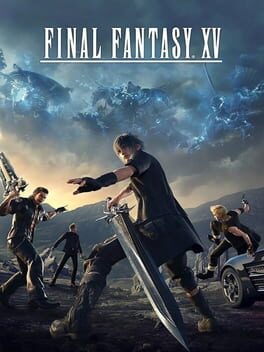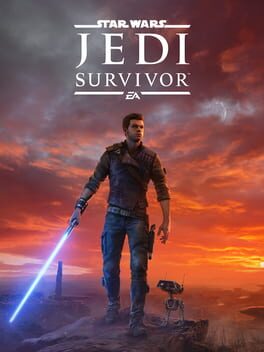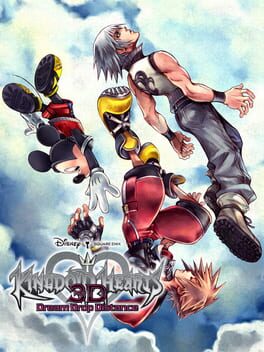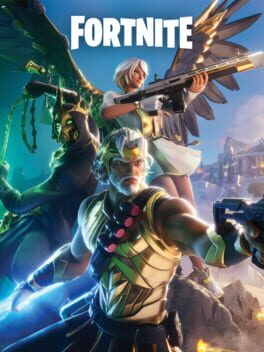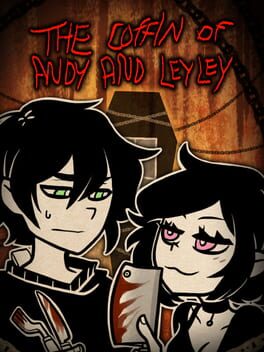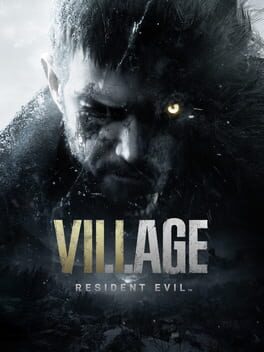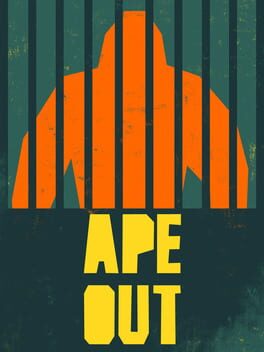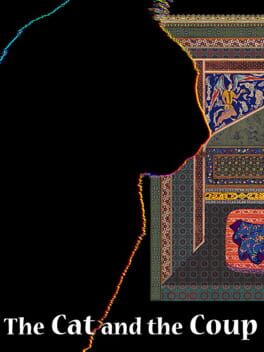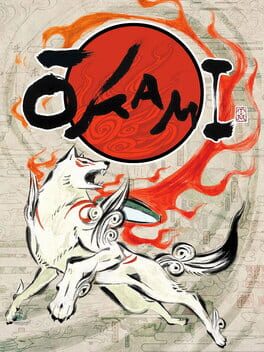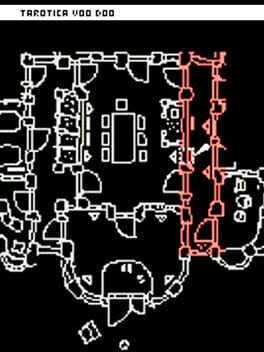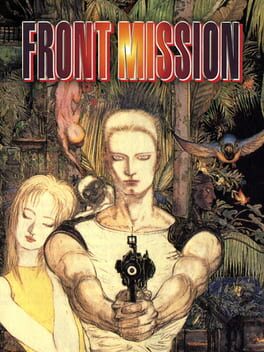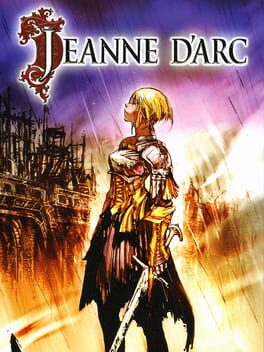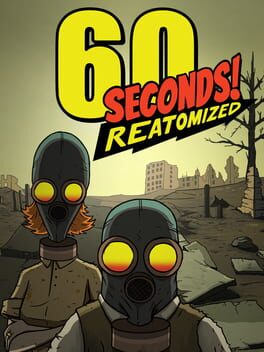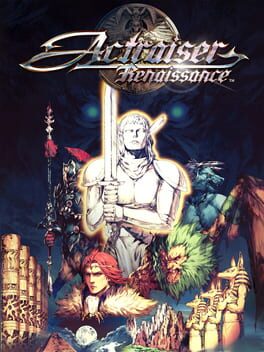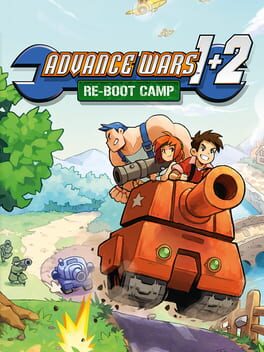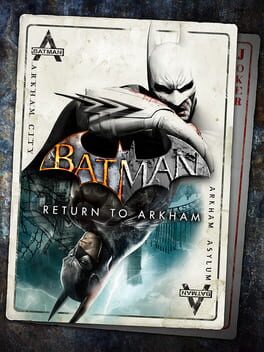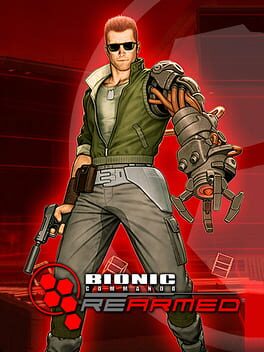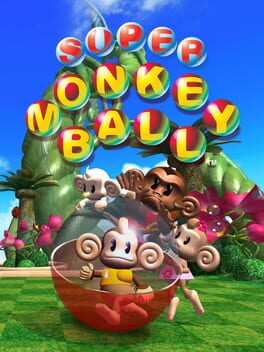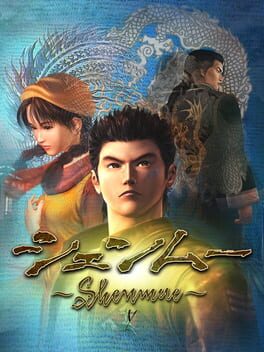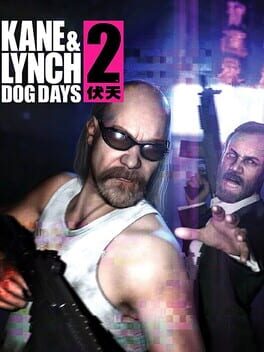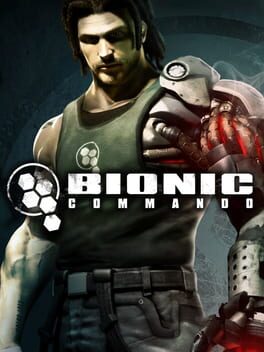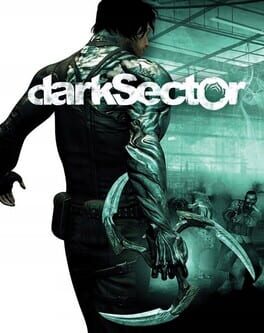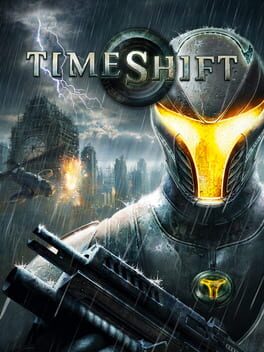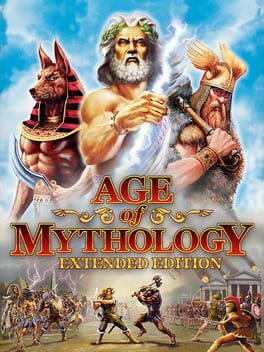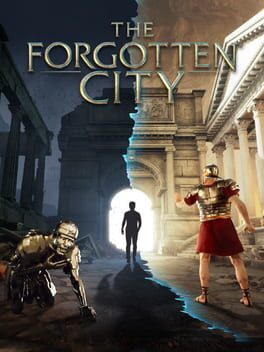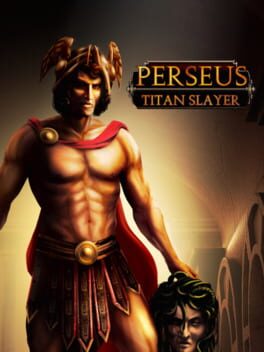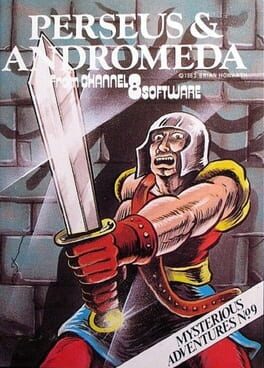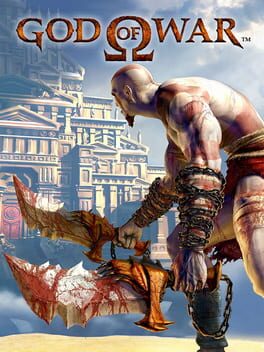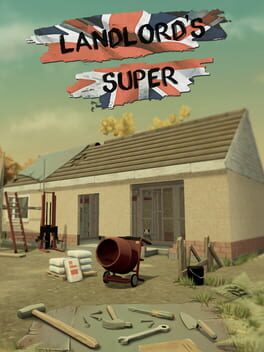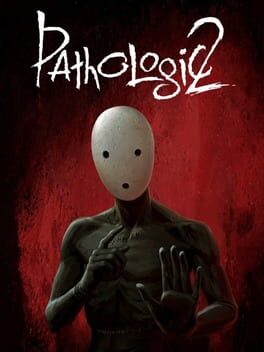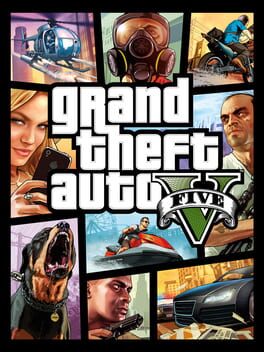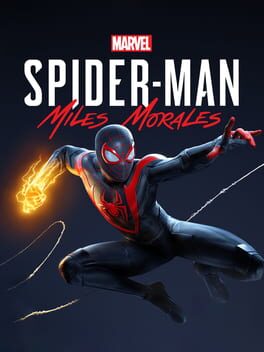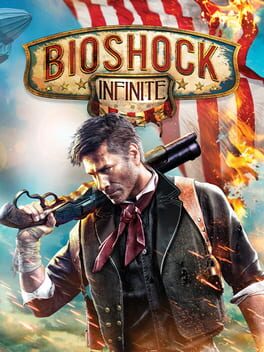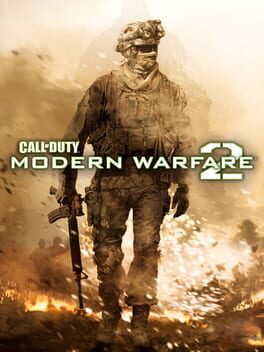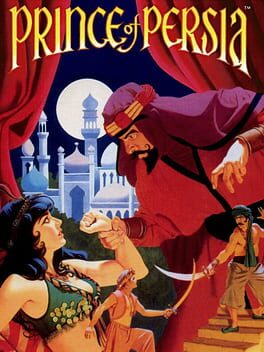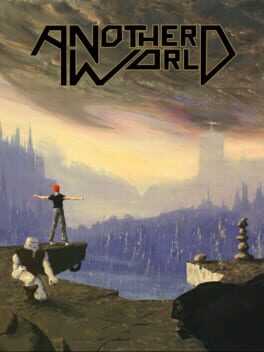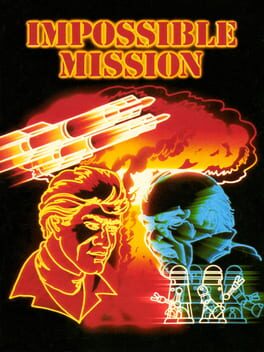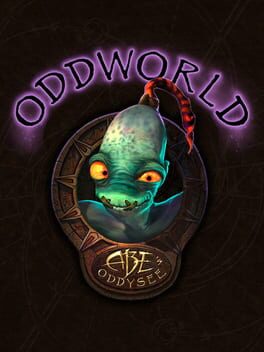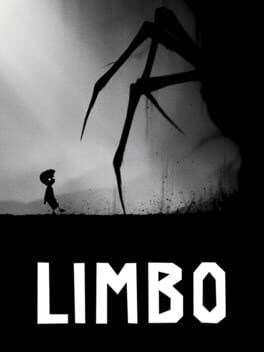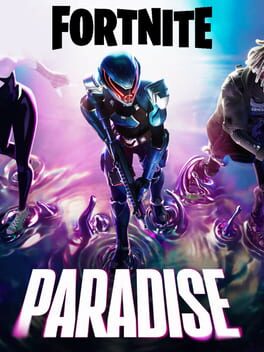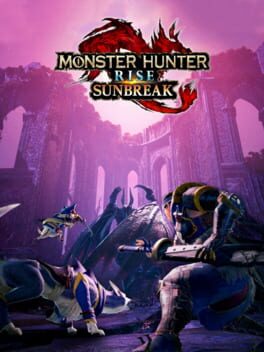saihara
213 reviews liked by saihara
Final Fantasy XV
2016
This review contains spoilers
I’ve got a reputation among friends as The World’s Only Cal Kestis liker. My impression of Jedi: Fallen Order is that it’s an enormously POPULAR game, given that it fulfilled everyone’s wishes for a story-driven single-player AAA Star Wars game about lightsabers where you actually tangibly swing one around, something that is not actually uncommon at all but I guess five years feels like a long time for a franchise that gets a new thing every six months. But despite being a AAA game that everyone played I never got the sense that Fallen Order was an especially beloved game; people have big quibbles with its sort of chunky approximation of souls combat, its admirable commitment to No Fast Travel and Not Even That Many Shortcuts, making you walk back and forth across levels at length (which has a side effect of making traversal powers and equipment feel REALLY game changing every time but I digress), and also smaller quibbles that add to the pile like, why are you killing so many ANIMALS in that game?? It’s weird how many like, alligators you’re just fuckin chopping up they’re just chilling! The biggest stickler for many people is of course Cal Kestis himself. Cal Lightsaber. Gotham’s The Joker. Star Wars Archie Riverdale. People HATE Cal. They hate how he talks. They hate that they feel his backstory is overused in extra-filmic Star Wars media. They hate his cool ponchos. They hate the way his character develops. They hate his name for some reason. They loudly hate how he looks which is rude considering he is just a face capture of his actor.
Not me though. I love Cal. Is he generic? Sure. Is his story predictable? Yes. That’s fine though dude. I’m playing a Star Wars game is it supposed to revolutionize storytelling? Was I expecting the 200 million dollar EA published Respawn game to shock and surprise me? I’m not watching frickin’ A Brighter Summer Day over here bro. Cal Kestis is a lil frickin’ cutie. Love me some Cal Kestis, he’s my guy. And I think the first game set the stage to take him and his winning supporting cast in all kinds of directions, it really could have been anything.
I find myself a little bit surprised at the direction that Survivor takes itself. If Fallen Order is a game that is, rotely and blandly, about learning to live trauma, Survivor is a game that is about this same group of people but especially Cal asking themselves what it looks like to live, period, and that’s a much headier question that the game admirably doesn’t pretend there are easy answers to. If the first game ends on something of a note of “well our quest was a bit of a bust but we’ve learned valuable spiritual lessons and come out the stronger for it, Cal has faced his fear and he’s finally found something to fight for and people to fight with,” then Survivor reexamines what it means that the thing he found to fight for was that he deeply internalized the last thing his master saying to him, when he was fourteen years old and fleeing for his life, being “hold the line.”
So a few years after the first game this expresses itself as Cal working for Saw Guerrera, a Star Wars character famous for being a guy who the narratives of Star Wars always say “whoa look out that’s the guy who’s a rebel but he’s Too Extreme and Goes To Far” but actually any time he’s onscreen he’s just being cool and morally correct about literally everything he ever does. So Cal’s working for him for seemingly years now, apart from his old crew which has broken up, and he’s taken on the responsibility of the Jedi Order which to him, a guy who was beginning to come of age at the philosophical nadir of the Jedi as a political organization and during a war in which the Jedi were moved from being The Cops to being The Army, means he has a moral responsibility to use all of his unique and considerable power to fight the empire in a militarized way every single day with no breaks, because every second of his downtime is a second that other people who need help that only he can give aren’t getting it. It’s a very single-minded way to approach the problem of how he can help people against the Empire and he is in fact so fucking weird about this that the only other Jedi he knows, Cere, has stopped hanging out with him over it and they’re not on speaking terms.
The central idea of the game being how to best live under the Empire and how best to fight them is like, shockingly well-woven between every main character. As one might guess, the main plot of the game, about some loser from the disastrously awful High Republic media line is brought out of cryogenic stasis and reveals that there’s a super secret planet that is effectively impossible for the Empire to know about or travel to, and everybody is like oh sick we could go live in peace there! But this guy, Dagan Gera, is like no no you see actually I’m like an evil weirdo 200 year old Jedi and I’m the bad guy now okay see ya later. And so the game becomes a series of quests to find bits and bops of various doohickeys to help Cal beat Dagan to the Ultimate Doohickey that unlocks the Special Planet or whatever it doesn’t REALLY matter, the important thing is that it’s an excuse to have Cal parade around the galaxy and reunite with his shipmates from the first game so they can all hash out their shit and explain the themes of the game to him.
Greez, the original pilot of the ship you fly around in, has settled on a remote frontier world called Koboh, and opened a little bar in a small town menaced by the raiders that Dagan commands. Greez was never fit to fight the empire, he was always just a guy, and a pretty frazzled one, and it makes sense for him to get out of dodge. This is cool. This is okay! He’s had a room in the basement set up for Cal for five years but Cal is so petulantly angry at him and so wrapped up in his own sense of mission that he hasn’t visited once. Merrin, who joined the crew after living most of her life alone among the ghosts of her people’s dead, left the crew, and the Fight, to find her identity. She’s toured the galaxy, and importantly she has helped people out, and decided that the place most appropriate for her most of the time is with Cere, who has joined a group of Jedi cultists who specifically aim to collect and preserve Jedi knowledge and relics from across the galaxy in secret, while also harboring and shuttling people who need protection from the Empire – an elaboration upon the group’s mission from the first game. Cal sees this as quitting, as walking away, and he can’t understand that it’s a different and important part of a fight against an enemy that is all-powerful, monolithic, and who wins by eliminating culture more than by killing people.
It’s cool that this game takes place after such a long timeskip because it’s clear that all of the fights you see have been had many times and really after like the first one with Greez all of the emotions in these arguments are very cooled. Cal is genuinely trying to let go of the betrayal he feels, he’s just not ready to understand what people are telling him, and they aren’t even trying to fight, they only want him to see a broader vision of what life is allowed to be, even in a world where justice legitimately does need to happen via violence.
The game is mature enough to understand that Cal is wrong but it’s also mature enough to know that the answer isn’t “Cal should lay down his lightsaber and embrace a retirement from his fight.” It’s ultimately temperance that everyone comes to understand is necessary for him. Cere knows that her path isn’t Cal’s path and she doesn’t try to convince him, ever, to join her. Merrin knows that she can do more with a group or a partner than she’s done on her own, but also that her newfound wisdom is a valuable asset to her. And Cal is shown multiple examples of the kinds of things that single-minded obsession with noble goals can do to someone in his position via the game’s villains.
Dagan Gera is of course a Jedi, but he is obsessed with his utopian vision of a future for the order that he controls via his discovery of the special planet and his guidance of new Jedi there, and when things start to go wrong he thinks he can pull it out of the fire himself. He truly believes that only he can make things go the way they’re supposed to, and a combination of betrayal by his closest ally and then finding the state of the galaxy when he is resurrected 200 years later to find a tyrannical empire in charge, having decimated the Jedi Order, he thinks his feelings of superiority have been justified, and that now it’s only he who stop this Empire, and he immediately starts doing awful shit in the name of fighting them. And there is of course the true villain of the game, Bode, who is present for most of the time as Cal’s newest and most stalwart ally, just a guy with a daughter he needs to protect, a dead wife he wants to avenge, and a thirst for stormtrooper blood that will never be quenched, but who is also generally very friendly and a quiet emotional rock for Cal at all times. He is, of course, a spy, but an unwilling one, with his daughters safety guaranteed only so long as he operates for the Imperial Security Bureau. Bode’s villain reveal is extremely predictable but the nuances of it may be less so. He is, like Cal, a Jedi survivor, but one who has obviously strayed a little (but importantly ONLY a little) further from his old ideals than Cal has. Protecting his daughter is now the only thing Bode REALLY cares about and he uses that as a shield for the thousands of people he gives up to the empire, but he also, genuinely, didn’t want to do it – it’s suggested that he’s fully prepared to turn tail and run with his kid to the secret planet with our heroes until they start talking about using it as a rebel safe harbor, and he’s just too scared and too selfish to let that kind of risk in. This single-mindedness mirrors Cal’s; it’s the only thing he really talks about, and he behaves increasingly extremely in the service of it. He and Cal both tap fully into what Jedi would call the Dark Side of the force by the end of the game to serve their desperate needs to protect what little family they have left, but Cal listens to his when they has him to be true to himself as he uses this power, and Bode is too scared to do anything but lash out at his daughter. Ultimately both men are desperate to feel a sense of control over the things that are important to them in a world where, fundamentally, they can’t control anything, and a big part of the game is about learning to accept that this isn’t possible. Bode can’t, and he dies.
Cal does, though. His last words, and the last moments of the game before the credits, spoken to a departed friend, are that he knows what he has to do, but he’s scared. This feels on the surface like a walking back of previous game, which was very much about Cal overcoming fear that he had lived with for the years since the Empire’s rise to power and the events of the game. But the fear Cal feels at the end of Survivor is wisdom. It’s the fear of vulnerability, of really letting people in again, of being himself, of letting go of a philosophy that was poisonous in its day and that can’t serve him in the present. Cal thought at the beginning of the game that everyone wanted him to stop fighting, but what they actually wanted was for him to fight and be a person, and that’s so much harder. It’s a much more uncertain place to leave things than the previous game left us with, and indeed if you boot up the post-game there’s now a Star Destroyer hanging in the sky over Koboh – the Empire comes for everyone eventually. But it’s a confident ending, and it feels right. Cal doesn’t have answers, and he doesn’t even really have peace with himself, but he’s opened himself up in a healthier way than he was able to in the beginning, and in a situation like the one these characters find themselves, I don’t think that’s nothing.
It’s somewhat unfortunate that due to the nature of how AAA games are produced, the tv show Andor was conceived, produced, and aired entirely during the dev cycle for Survivor, because these two works do take place in generally the same setting within Star Wars and cover an overlapping set of themes. Through that lens Survivor does feel a little bit like We Have Andor At Home but I think it’s served well by its very zoomed-in focus on Cal’s approach to the question of How To Live And Perform Rebellion vs Andor’s wider-lens, and, in the words of a dear friend of mine, there are MUCH worse things to be in this world than Andor At Home. So I’m left impressed and surprised by Survivor. I do think the game is improved over its predecessor in every single way even if I’m not talking about the play of the game, but like as much as I’m The World’s Only Cal Kestis Fan, that was notable largely because Fallen Order’s writing is so aggressively forgettable, which itself is a staggering improvement over all other writing from Respawn as a studio. I hope that now there will be more of us. I hope that now I will be Only One Of Many Cal Kestis Fans. I imagine it helps that he’s way hotter in this one. I put the windswept hair on him with a short beard. It was the right thing to do.
Not me though. I love Cal. Is he generic? Sure. Is his story predictable? Yes. That’s fine though dude. I’m playing a Star Wars game is it supposed to revolutionize storytelling? Was I expecting the 200 million dollar EA published Respawn game to shock and surprise me? I’m not watching frickin’ A Brighter Summer Day over here bro. Cal Kestis is a lil frickin’ cutie. Love me some Cal Kestis, he’s my guy. And I think the first game set the stage to take him and his winning supporting cast in all kinds of directions, it really could have been anything.
I find myself a little bit surprised at the direction that Survivor takes itself. If Fallen Order is a game that is, rotely and blandly, about learning to live trauma, Survivor is a game that is about this same group of people but especially Cal asking themselves what it looks like to live, period, and that’s a much headier question that the game admirably doesn’t pretend there are easy answers to. If the first game ends on something of a note of “well our quest was a bit of a bust but we’ve learned valuable spiritual lessons and come out the stronger for it, Cal has faced his fear and he’s finally found something to fight for and people to fight with,” then Survivor reexamines what it means that the thing he found to fight for was that he deeply internalized the last thing his master saying to him, when he was fourteen years old and fleeing for his life, being “hold the line.”
So a few years after the first game this expresses itself as Cal working for Saw Guerrera, a Star Wars character famous for being a guy who the narratives of Star Wars always say “whoa look out that’s the guy who’s a rebel but he’s Too Extreme and Goes To Far” but actually any time he’s onscreen he’s just being cool and morally correct about literally everything he ever does. So Cal’s working for him for seemingly years now, apart from his old crew which has broken up, and he’s taken on the responsibility of the Jedi Order which to him, a guy who was beginning to come of age at the philosophical nadir of the Jedi as a political organization and during a war in which the Jedi were moved from being The Cops to being The Army, means he has a moral responsibility to use all of his unique and considerable power to fight the empire in a militarized way every single day with no breaks, because every second of his downtime is a second that other people who need help that only he can give aren’t getting it. It’s a very single-minded way to approach the problem of how he can help people against the Empire and he is in fact so fucking weird about this that the only other Jedi he knows, Cere, has stopped hanging out with him over it and they’re not on speaking terms.
The central idea of the game being how to best live under the Empire and how best to fight them is like, shockingly well-woven between every main character. As one might guess, the main plot of the game, about some loser from the disastrously awful High Republic media line is brought out of cryogenic stasis and reveals that there’s a super secret planet that is effectively impossible for the Empire to know about or travel to, and everybody is like oh sick we could go live in peace there! But this guy, Dagan Gera, is like no no you see actually I’m like an evil weirdo 200 year old Jedi and I’m the bad guy now okay see ya later. And so the game becomes a series of quests to find bits and bops of various doohickeys to help Cal beat Dagan to the Ultimate Doohickey that unlocks the Special Planet or whatever it doesn’t REALLY matter, the important thing is that it’s an excuse to have Cal parade around the galaxy and reunite with his shipmates from the first game so they can all hash out their shit and explain the themes of the game to him.
Greez, the original pilot of the ship you fly around in, has settled on a remote frontier world called Koboh, and opened a little bar in a small town menaced by the raiders that Dagan commands. Greez was never fit to fight the empire, he was always just a guy, and a pretty frazzled one, and it makes sense for him to get out of dodge. This is cool. This is okay! He’s had a room in the basement set up for Cal for five years but Cal is so petulantly angry at him and so wrapped up in his own sense of mission that he hasn’t visited once. Merrin, who joined the crew after living most of her life alone among the ghosts of her people’s dead, left the crew, and the Fight, to find her identity. She’s toured the galaxy, and importantly she has helped people out, and decided that the place most appropriate for her most of the time is with Cere, who has joined a group of Jedi cultists who specifically aim to collect and preserve Jedi knowledge and relics from across the galaxy in secret, while also harboring and shuttling people who need protection from the Empire – an elaboration upon the group’s mission from the first game. Cal sees this as quitting, as walking away, and he can’t understand that it’s a different and important part of a fight against an enemy that is all-powerful, monolithic, and who wins by eliminating culture more than by killing people.
It’s cool that this game takes place after such a long timeskip because it’s clear that all of the fights you see have been had many times and really after like the first one with Greez all of the emotions in these arguments are very cooled. Cal is genuinely trying to let go of the betrayal he feels, he’s just not ready to understand what people are telling him, and they aren’t even trying to fight, they only want him to see a broader vision of what life is allowed to be, even in a world where justice legitimately does need to happen via violence.
The game is mature enough to understand that Cal is wrong but it’s also mature enough to know that the answer isn’t “Cal should lay down his lightsaber and embrace a retirement from his fight.” It’s ultimately temperance that everyone comes to understand is necessary for him. Cere knows that her path isn’t Cal’s path and she doesn’t try to convince him, ever, to join her. Merrin knows that she can do more with a group or a partner than she’s done on her own, but also that her newfound wisdom is a valuable asset to her. And Cal is shown multiple examples of the kinds of things that single-minded obsession with noble goals can do to someone in his position via the game’s villains.
Dagan Gera is of course a Jedi, but he is obsessed with his utopian vision of a future for the order that he controls via his discovery of the special planet and his guidance of new Jedi there, and when things start to go wrong he thinks he can pull it out of the fire himself. He truly believes that only he can make things go the way they’re supposed to, and a combination of betrayal by his closest ally and then finding the state of the galaxy when he is resurrected 200 years later to find a tyrannical empire in charge, having decimated the Jedi Order, he thinks his feelings of superiority have been justified, and that now it’s only he who stop this Empire, and he immediately starts doing awful shit in the name of fighting them. And there is of course the true villain of the game, Bode, who is present for most of the time as Cal’s newest and most stalwart ally, just a guy with a daughter he needs to protect, a dead wife he wants to avenge, and a thirst for stormtrooper blood that will never be quenched, but who is also generally very friendly and a quiet emotional rock for Cal at all times. He is, of course, a spy, but an unwilling one, with his daughters safety guaranteed only so long as he operates for the Imperial Security Bureau. Bode’s villain reveal is extremely predictable but the nuances of it may be less so. He is, like Cal, a Jedi survivor, but one who has obviously strayed a little (but importantly ONLY a little) further from his old ideals than Cal has. Protecting his daughter is now the only thing Bode REALLY cares about and he uses that as a shield for the thousands of people he gives up to the empire, but he also, genuinely, didn’t want to do it – it’s suggested that he’s fully prepared to turn tail and run with his kid to the secret planet with our heroes until they start talking about using it as a rebel safe harbor, and he’s just too scared and too selfish to let that kind of risk in. This single-mindedness mirrors Cal’s; it’s the only thing he really talks about, and he behaves increasingly extremely in the service of it. He and Cal both tap fully into what Jedi would call the Dark Side of the force by the end of the game to serve their desperate needs to protect what little family they have left, but Cal listens to his when they has him to be true to himself as he uses this power, and Bode is too scared to do anything but lash out at his daughter. Ultimately both men are desperate to feel a sense of control over the things that are important to them in a world where, fundamentally, they can’t control anything, and a big part of the game is about learning to accept that this isn’t possible. Bode can’t, and he dies.
Cal does, though. His last words, and the last moments of the game before the credits, spoken to a departed friend, are that he knows what he has to do, but he’s scared. This feels on the surface like a walking back of previous game, which was very much about Cal overcoming fear that he had lived with for the years since the Empire’s rise to power and the events of the game. But the fear Cal feels at the end of Survivor is wisdom. It’s the fear of vulnerability, of really letting people in again, of being himself, of letting go of a philosophy that was poisonous in its day and that can’t serve him in the present. Cal thought at the beginning of the game that everyone wanted him to stop fighting, but what they actually wanted was for him to fight and be a person, and that’s so much harder. It’s a much more uncertain place to leave things than the previous game left us with, and indeed if you boot up the post-game there’s now a Star Destroyer hanging in the sky over Koboh – the Empire comes for everyone eventually. But it’s a confident ending, and it feels right. Cal doesn’t have answers, and he doesn’t even really have peace with himself, but he’s opened himself up in a healthier way than he was able to in the beginning, and in a situation like the one these characters find themselves, I don’t think that’s nothing.
It’s somewhat unfortunate that due to the nature of how AAA games are produced, the tv show Andor was conceived, produced, and aired entirely during the dev cycle for Survivor, because these two works do take place in generally the same setting within Star Wars and cover an overlapping set of themes. Through that lens Survivor does feel a little bit like We Have Andor At Home but I think it’s served well by its very zoomed-in focus on Cal’s approach to the question of How To Live And Perform Rebellion vs Andor’s wider-lens, and, in the words of a dear friend of mine, there are MUCH worse things to be in this world than Andor At Home. So I’m left impressed and surprised by Survivor. I do think the game is improved over its predecessor in every single way even if I’m not talking about the play of the game, but like as much as I’m The World’s Only Cal Kestis Fan, that was notable largely because Fallen Order’s writing is so aggressively forgettable, which itself is a staggering improvement over all other writing from Respawn as a studio. I hope that now there will be more of us. I hope that now I will be Only One Of Many Cal Kestis Fans. I imagine it helps that he’s way hotter in this one. I put the windswept hair on him with a short beard. It was the right thing to do.
This game starts off by you inexplicably fighting Ursula as a tutorial, and then immediately goes on to spoil The World Ends With You, a game barely anyone had played up to that point, and that is only the first hour of the game. Baffled, yet admired by how much this one goes completely off the rails.
Season looks promising so far. No NPC's on the map minus the ones you spawn in yourself makes a welcome change, and the new Greek Myth inspired areas look nice as well.
Although I gotta say Aphrodite and Medusa were done dirty. Compare the concept art to the actual in-game skins, it sucks. Really hope they become alternate styles in bonus rewards or something (he says as if he'll ever change from Goku to those skins anyway)
Although I gotta say Aphrodite and Medusa were done dirty. Compare the concept art to the actual in-game skins, it sucks. Really hope they become alternate styles in bonus rewards or something (he says as if he'll ever change from Goku to those skins anyway)
Final Fantasy XVI
2023
I considered strongly putting together a long-form critique of this game, but the most damning statement I could possibly make about Final Fantasy XVI is that I truly don't think it's worth it. The ways in which I think this game is bad are not unique or interesting: it is bad in the same way the vast majority of these prestige Sony single-player exclusives are. Its failures are common, predictable, and depressingly endemic. It is bad because it hates women, it is bad because it treats it's subject matter with an aggressive lack of care or interest, it is bad because it's imagination is as narrow and constrained as it's level design. But more than anything else, it is bad because it only wants to be Good.
Oxymoronic a statement as it might appear, this is core to the game's failings to me. People who make games generally want to make good games, of course, but paired with that there is an intent, an interest, an idea that seeks to be communicated, that the eloquence with which it professes its aesthetic, thematic, or mechanical goals will produce the quality it seeks. Final Fantasy XVI may have such goals, but they are supplicant to its desire to be liked, and so, rather than plant a flag of its own, it stitches together one from fabric pillaged from the most immediate eikons of popularity and quality - A Song of Ice and Fire, God of War, Demon Slayer, Devil May Cry - desperately begging to be liked by cloaking itself in what many people already do, needing to be loved in the way those things are, without any of the work or vision of its influences, and without any charisma of its own. Much like the patch and DLC content for Final Fantasy XV, it's a reactionary and cloying work that contorts itself into a shape it thinks people will love, rather than finding a unique self to be.
From the aggressively self-serious tone that embraces wholeheartedly the aesthetics of Prestige Fantasy Television with all its fucks and shits and incest and Grim Darkness to let you know that This Isn't Your Daddy's Final Fantasy, without actually being anywhere near as genuinely Dark, sad, or depressing as something like XV, from combat that borrows the surface-level signifiers of Devil May Cry combat - stingers, devil bringers, enemy step - but without any actual opposition or reaction of that series' diverse and reactive enemy set and thoughtful level design, or the way there's a episode of television-worth of lectures from a character explaining troop movements and map markers that genuinely do not matter in any way in order to make you feel like you're experiencing a well thought-out and materially concerned political Serious Fantasy, Final Fantasy XVI is pure wafer-thin illusion; all the surface from it's myriad influences but none of the depth or nuance, a greatest hits album from a band with no voice to call their own, an algorithmically generated playlist of hits that tunelessly resound with nothing. It looks like Devil May Cry, but it isn't - Devil May Cry would ask more of you than dodging one attack at a time while you perform a particularly flashy MMO rotation. It looks like A Song of Ice and Fire, but it isn't - without Martin's careful historical eye and materialist concerns, the illusion that this comes even within striking distance of that flawed work shatters when you think about the setting for more than a moment.
In fairness, Final Fantasy XVI does bring more than just the surface level into its world: it also brings with it the nastiest and ugliest parts of those works into this one, replicated wholeheartedly as Aesthetic, bereft of whatever semblance of texture and critique may have once been there. Benedikta Harman might be the most disgustingly treated woman in a recent work of fiction, the seemingly uniform AAA Game misogyny of evil mothers and heroic, redeemable fathers is alive and well, 16's version of this now agonizingly tired cliche going farther even than games I've railed against for it in the past, which all culminates in a moment where three men tell the female lead to stay home while they go and fight (despite one of those men being a proven liability to himself and others when doing the same thing he is about to go and do again, while she is not), she immediately acquiesces, and dutifully remains in the proverbial kitchen. Something that thinks so little of women is self-evidently incapable of meaningfully tackling any real-world issue, something Final Fantasy XVI goes on to decisively prove, with its story of systemic evils defeated not with systemic criticism, but with Great, Powerful Men, a particularly tiresome kind of rugged bootstrap individualism that seeks to reduce real-world evils to shonen enemies for the Special Man with Special Powers to defeat on his lonesome. It's an attempt to discuss oppression and racism that would embarrass even the other shonen media it is clearly closer in spirit to than the dark fantasy political epic it wears the skin of. In a world where the power fantasy of the shonen superhero is sacrosanct over all other concerns, it leads to a conclusion as absurd and fundamentally unimaginative as shonen jump's weakest scripts: the only thing that can stop a Bad Guy with an Eikon is a Good Guy with an Eikon.
In borrowing the aesthetics of the dark fantasy - and Matsuno games - it seeks to emulate, but without the nuance, FF16 becomes a game where the perspective of the enslaved is almost completely absent (Clive's period as a slave might as well not have occurred for all it impacts his character), and the power of nobility is Good when it is wielded by Good Hands like Lord Rosfield, a slave owner who, despite owning the clearly abused character who serves as our introduction to the bearers, is eulogized completely uncritically by the script, until a final side quest has a character claim that he was planning to free the slaves all along...alongside a letter where Lord Rosfield discusses his desire to "put down the savages". I've never seen attempted slave owner apologia that didn't reveal its virulent underlying racism, and this is no exception. In fact, any time the game attempts to put on a facade of being about something other than The Shonen Hero battling other Kamen Riders for dominance, it crumbles nigh-immediately; when Final Fantasy 16 makes its overtures towards the Power of Friendship, it rings utterly false and hollow: Clive's friends are not his power. His power is his power.
The only part of the game that truly spoke to me was the widely-derided side-quests, which offer a peek into a more compelling story: the story of a man doing the work to build and maintain a community, contributing to both the material and emotional needs of a commune that attempts to exist outside the violence of society. As tedious as these sidequests are - and as agonizing as their pacing so often is - it's the only part of this game where it felt like I was engaging with an idea. But ultimately, even this is annihilated by the game's bootstrap nonsense - that being that the hideaway is funded and maintained by the wealthy and influential across the world, the direct beneficiaries and embodiments of the status quo funding what their involvement reveals to be an utterly illusionary attempt to escape it, rendering what could be an effective exploration of what building a new idea of a community practically looks like into something that could be good neighbors with Galt's Gulch.
In a series that is routinely deeply rewarding for me to consider, FF16 stands as perhaps its most shallow, underwritten, and vacuous entry in decades. All games are ultimately illusions, of course: we're all just moving data around spreadsheets, at the end of the day. But - as is the modern AAA mode de jour - 16 is the result of the careful subtraction of texture from the experience of a game, the removal of any potential frictions and frustrations, but further even than that, it is the removal of personality, of difference, it is the attempt to make make the smoothest, most likable affect possible to the widest number of people possible. And, just like with its AAA brethren, it has almost nothing to offer me. It is the affect of Devil May Cry without its texture, the affect of Game of Thrones without even its nuance, and the affect of Final Fantasy without its soul.
Final Fantasy XVI is ultimately a success. It sought out to be Good, in the way a PS5 game like this is Good, and succeeded. And in so doing, it closed off any possibility that it would ever reach me.
It doesn’t really surprise me that each positive sentiment I have seen on Final Fantasy XVI is followed by an exclamation of derision over the series’ recent past. Whether the point of betrayal and failure was in XV, or with XIII, or even as far back as VIII, the rhetorical move is well and truly that Final Fantasy has been Bad, and with XVI, it is good again. Unfortunately, as someone who thought Final Fantasy has Been Good, consistently, throughout essentially the entire span of it's existence, I find myself on the other side of this one.
Final Fantasy XV convinced me that I could still love video games when I thought, for a moment, that I might not. That it was still possible to make games on this scale that were idiosyncratic, personal, and deeply human, even in the awful place the video game industry is in.
Final Fantasy XVI convinced me that it isn't.
Oxymoronic a statement as it might appear, this is core to the game's failings to me. People who make games generally want to make good games, of course, but paired with that there is an intent, an interest, an idea that seeks to be communicated, that the eloquence with which it professes its aesthetic, thematic, or mechanical goals will produce the quality it seeks. Final Fantasy XVI may have such goals, but they are supplicant to its desire to be liked, and so, rather than plant a flag of its own, it stitches together one from fabric pillaged from the most immediate eikons of popularity and quality - A Song of Ice and Fire, God of War, Demon Slayer, Devil May Cry - desperately begging to be liked by cloaking itself in what many people already do, needing to be loved in the way those things are, without any of the work or vision of its influences, and without any charisma of its own. Much like the patch and DLC content for Final Fantasy XV, it's a reactionary and cloying work that contorts itself into a shape it thinks people will love, rather than finding a unique self to be.
From the aggressively self-serious tone that embraces wholeheartedly the aesthetics of Prestige Fantasy Television with all its fucks and shits and incest and Grim Darkness to let you know that This Isn't Your Daddy's Final Fantasy, without actually being anywhere near as genuinely Dark, sad, or depressing as something like XV, from combat that borrows the surface-level signifiers of Devil May Cry combat - stingers, devil bringers, enemy step - but without any actual opposition or reaction of that series' diverse and reactive enemy set and thoughtful level design, or the way there's a episode of television-worth of lectures from a character explaining troop movements and map markers that genuinely do not matter in any way in order to make you feel like you're experiencing a well thought-out and materially concerned political Serious Fantasy, Final Fantasy XVI is pure wafer-thin illusion; all the surface from it's myriad influences but none of the depth or nuance, a greatest hits album from a band with no voice to call their own, an algorithmically generated playlist of hits that tunelessly resound with nothing. It looks like Devil May Cry, but it isn't - Devil May Cry would ask more of you than dodging one attack at a time while you perform a particularly flashy MMO rotation. It looks like A Song of Ice and Fire, but it isn't - without Martin's careful historical eye and materialist concerns, the illusion that this comes even within striking distance of that flawed work shatters when you think about the setting for more than a moment.
In fairness, Final Fantasy XVI does bring more than just the surface level into its world: it also brings with it the nastiest and ugliest parts of those works into this one, replicated wholeheartedly as Aesthetic, bereft of whatever semblance of texture and critique may have once been there. Benedikta Harman might be the most disgustingly treated woman in a recent work of fiction, the seemingly uniform AAA Game misogyny of evil mothers and heroic, redeemable fathers is alive and well, 16's version of this now agonizingly tired cliche going farther even than games I've railed against for it in the past, which all culminates in a moment where three men tell the female lead to stay home while they go and fight (despite one of those men being a proven liability to himself and others when doing the same thing he is about to go and do again, while she is not), she immediately acquiesces, and dutifully remains in the proverbial kitchen. Something that thinks so little of women is self-evidently incapable of meaningfully tackling any real-world issue, something Final Fantasy XVI goes on to decisively prove, with its story of systemic evils defeated not with systemic criticism, but with Great, Powerful Men, a particularly tiresome kind of rugged bootstrap individualism that seeks to reduce real-world evils to shonen enemies for the Special Man with Special Powers to defeat on his lonesome. It's an attempt to discuss oppression and racism that would embarrass even the other shonen media it is clearly closer in spirit to than the dark fantasy political epic it wears the skin of. In a world where the power fantasy of the shonen superhero is sacrosanct over all other concerns, it leads to a conclusion as absurd and fundamentally unimaginative as shonen jump's weakest scripts: the only thing that can stop a Bad Guy with an Eikon is a Good Guy with an Eikon.
In borrowing the aesthetics of the dark fantasy - and Matsuno games - it seeks to emulate, but without the nuance, FF16 becomes a game where the perspective of the enslaved is almost completely absent (Clive's period as a slave might as well not have occurred for all it impacts his character), and the power of nobility is Good when it is wielded by Good Hands like Lord Rosfield, a slave owner who, despite owning the clearly abused character who serves as our introduction to the bearers, is eulogized completely uncritically by the script, until a final side quest has a character claim that he was planning to free the slaves all along...alongside a letter where Lord Rosfield discusses his desire to "put down the savages". I've never seen attempted slave owner apologia that didn't reveal its virulent underlying racism, and this is no exception. In fact, any time the game attempts to put on a facade of being about something other than The Shonen Hero battling other Kamen Riders for dominance, it crumbles nigh-immediately; when Final Fantasy 16 makes its overtures towards the Power of Friendship, it rings utterly false and hollow: Clive's friends are not his power. His power is his power.
The only part of the game that truly spoke to me was the widely-derided side-quests, which offer a peek into a more compelling story: the story of a man doing the work to build and maintain a community, contributing to both the material and emotional needs of a commune that attempts to exist outside the violence of society. As tedious as these sidequests are - and as agonizing as their pacing so often is - it's the only part of this game where it felt like I was engaging with an idea. But ultimately, even this is annihilated by the game's bootstrap nonsense - that being that the hideaway is funded and maintained by the wealthy and influential across the world, the direct beneficiaries and embodiments of the status quo funding what their involvement reveals to be an utterly illusionary attempt to escape it, rendering what could be an effective exploration of what building a new idea of a community practically looks like into something that could be good neighbors with Galt's Gulch.
In a series that is routinely deeply rewarding for me to consider, FF16 stands as perhaps its most shallow, underwritten, and vacuous entry in decades. All games are ultimately illusions, of course: we're all just moving data around spreadsheets, at the end of the day. But - as is the modern AAA mode de jour - 16 is the result of the careful subtraction of texture from the experience of a game, the removal of any potential frictions and frustrations, but further even than that, it is the removal of personality, of difference, it is the attempt to make make the smoothest, most likable affect possible to the widest number of people possible. And, just like with its AAA brethren, it has almost nothing to offer me. It is the affect of Devil May Cry without its texture, the affect of Game of Thrones without even its nuance, and the affect of Final Fantasy without its soul.
Final Fantasy XVI is ultimately a success. It sought out to be Good, in the way a PS5 game like this is Good, and succeeded. And in so doing, it closed off any possibility that it would ever reach me.
It doesn’t really surprise me that each positive sentiment I have seen on Final Fantasy XVI is followed by an exclamation of derision over the series’ recent past. Whether the point of betrayal and failure was in XV, or with XIII, or even as far back as VIII, the rhetorical move is well and truly that Final Fantasy has been Bad, and with XVI, it is good again. Unfortunately, as someone who thought Final Fantasy has Been Good, consistently, throughout essentially the entire span of it's existence, I find myself on the other side of this one.
Final Fantasy XV convinced me that I could still love video games when I thought, for a moment, that I might not. That it was still possible to make games on this scale that were idiosyncratic, personal, and deeply human, even in the awful place the video game industry is in.
Final Fantasy XVI convinced me that it isn't.
i dunno, let's keep this quick. to say it's a bit clumsy is an understatement - and there are certainly aspects of the overall narrative i struggle with - but the depths of its sincerity won me over. i have no particular attachment to yakuza 7 either, and in fact i find much of that game to be very awkward, stilted, and grating so ultimately no one's more stunned than myself here.
when it's not luxuriating in this chilled-out ocean's twelve vibe which i loved, infinite wealth is written with far more intentionality and consideration than most entries in the series; while one might accuse of it of verging on threadbare or cloying for its strict emphasis on theme, i think the game trusts its audience to take some of the emotional leaps necessary to make the storytelling work. character writing for the leads and the party members has seen a dramatic improvement across the board. ichiban as usual brings a lot of levity to the table - thankfully none of it quite as irritating in the zany sense as 7 liked to employ - but kiryu's portions of the game are comparatively sobering. collecting memoirs has a weird psychological effect at times but the series has earned the right to do this by this point given how much of the kiryu saga can feel siloed or compartmentalized - in the same vein as gaiden, the game almost damns him for this, for never taking a chance to stop and reflect, for the consequences of his interminable martyr complex
that tendency to bury the past is only contrasted further by infinite wealth being maybe the most direct sequel the series has seen yet - the events of that game are still fresh in everyone's mind and sets the stage for the overarching conflict and everyone's investment in said conflict. it's a surprisingly natural extension of a lot of 7's themes, and i found it worked better for me this time. 7 often felt more gestural than anything else - to me it balanced far too much as this metaphorical (and literal) tearing down of the old ways, handling the introduction of a new protagonist, paying lipservice to series veterans and setting up parallels to the original ryu ga gotoku. infinite wealth to me feels more fully-formed, more confident; i think the team was able to use this title's unique hook and premise to really bring the most out of 7s promise of something new, and it could only have achieved it by taking the time to reflect on the past.
to this end: they made the game a JRPG this time, that counts for something. and not just a JRPG but one that feels as close to traditional RGG action as possible. some excellent systems this time with a lot of fascinating interplay and the level curve is fantastic. not necessary to sum up all the changes, you've seen them, but they really promote a lot of dynamic decision-making with respect to positioning and once you figure out how status effects can correlate with them you feel like your third eye's opening. very fond memories here of navigating around a crowd of enemies - some of whom have been put to sleep - and figuring out how best to maximize damage without waking anyone drowsy up. lots more strategy and enjoyment to be had here than pretty much anywhere in 7.
that said, i know RGG prides themselves on the statistics relating to players completing their titles, but they could really afford to take a few more risks with enemy waves in the main campaign. i felt like my most interesting encounters were usually street bosses or main story bosses, but the main campaign's filled with trash mobs. and i'm not saying every fight has to be some tactician's exercise - in fact i think that's the opposite of what people actually would enjoy - but i really wish the game took the time to play around even more with positioning. there are some exciting scenarios in the game that are too few and far in-between. stages that split up the party, encounters with unique mechanics...would really liked to have seen more in that vein.
some extra notes - would like to dig a bit deeper into the strengths of the narrative as well as some additional hangups but i can't be assed to write more
- honolulu's great, it gets probably a little too big for its own good but it's a real breath of fresh air for most of the game
- yamai is the best new character they've introduced in years
- dondoko island feels like a classic yakuza minigame in the best possible way, might even represent the apex of this kind of design. not obscenely grindy but just something casual and comfortable with enough layers to dig into without being overwheming and enough versatility to express yourself. shame you can't really say the same for sujimon!
- kiryu's party is disarmingly charming and they have some insanely good banter
- despite what some have said, i think this is a good follow-up to gaiden. it's not explicit about it but this is still very much a reckoning with kiryu's character and his mentality; it is every bit as concerned and preoccupied with the series mythos, the core ideas and conflicts driving a lot of installments
- honestly found the pacing to be on-par for the average RGG title if not better. i can concede that the dondoko island introduction was a bit too long but that is the most ground i can afford. if we can accept y5 into our hearts we can accept infinite wealth; IW makes y5 look deranged for its intrusiveness despite both titles occupying a similar length. if any of it registers as an actual problem, i think people would benefit from revisiting yakuza 7 to find it is almost exactly the same structurally if not worse
- IW is home to maybe the best needle drop in the medium
- played in japanese, like i usually do, so no real interest in commenting on the english dub since it's not real to me but i will say that what i listened to seemed like a bit of a step back from the dub quality in previous RGG games. yongyea isn't a convincing kiryu either and while i could be a bit more of a hater here all i will say is there is a STAGGERING whiplash involved in casting a guy like that as the lead in a game with themes like this. in a grouchier mood, i think it would genuinely be a bit difficult to look past this and it does leave me feeling sour, but ultimately the dub doesn't reflect my chosen means of engaging with the title and it never will
- what is difficult to look past is the game's DLC rollout, which arbitrarily gates higher difficulties, new game +, and a postgame dungeon. i acquired these through dubious means (which i highly recommend you also do) so i feel confident in saying they're really not at all worth the money unless you had a desire to spend more time in this world, but what a colossal and egregious failure to price it in this fashion. new game + specifically has tons of bizarre issues that make me believe a revision of some kind was necessary.
- you will not regret downloading this mod that removes the doors in dungeons
long story short, ryu ga gotoku's journey began in 2005 with a simple motif: to live is to not run away. so much of infinite wealth is about taking that notion to its furthest extent. it couldn't have possibly hit at a better time for me. at times it might be a classic case of this series biting off a bit more than it can chew for a sequel, but i don't think there's anything you can reliably point to that would make me think this is one step forwards, two steps back.
also awesome to have a game that posits that hawaii is filled with the fire monks from elden ring and then you have to travel to the resident evil 4 island to beat them up
when it's not luxuriating in this chilled-out ocean's twelve vibe which i loved, infinite wealth is written with far more intentionality and consideration than most entries in the series; while one might accuse of it of verging on threadbare or cloying for its strict emphasis on theme, i think the game trusts its audience to take some of the emotional leaps necessary to make the storytelling work. character writing for the leads and the party members has seen a dramatic improvement across the board. ichiban as usual brings a lot of levity to the table - thankfully none of it quite as irritating in the zany sense as 7 liked to employ - but kiryu's portions of the game are comparatively sobering. collecting memoirs has a weird psychological effect at times but the series has earned the right to do this by this point given how much of the kiryu saga can feel siloed or compartmentalized - in the same vein as gaiden, the game almost damns him for this, for never taking a chance to stop and reflect, for the consequences of his interminable martyr complex
that tendency to bury the past is only contrasted further by infinite wealth being maybe the most direct sequel the series has seen yet - the events of that game are still fresh in everyone's mind and sets the stage for the overarching conflict and everyone's investment in said conflict. it's a surprisingly natural extension of a lot of 7's themes, and i found it worked better for me this time. 7 often felt more gestural than anything else - to me it balanced far too much as this metaphorical (and literal) tearing down of the old ways, handling the introduction of a new protagonist, paying lipservice to series veterans and setting up parallels to the original ryu ga gotoku. infinite wealth to me feels more fully-formed, more confident; i think the team was able to use this title's unique hook and premise to really bring the most out of 7s promise of something new, and it could only have achieved it by taking the time to reflect on the past.
to this end: they made the game a JRPG this time, that counts for something. and not just a JRPG but one that feels as close to traditional RGG action as possible. some excellent systems this time with a lot of fascinating interplay and the level curve is fantastic. not necessary to sum up all the changes, you've seen them, but they really promote a lot of dynamic decision-making with respect to positioning and once you figure out how status effects can correlate with them you feel like your third eye's opening. very fond memories here of navigating around a crowd of enemies - some of whom have been put to sleep - and figuring out how best to maximize damage without waking anyone drowsy up. lots more strategy and enjoyment to be had here than pretty much anywhere in 7.
that said, i know RGG prides themselves on the statistics relating to players completing their titles, but they could really afford to take a few more risks with enemy waves in the main campaign. i felt like my most interesting encounters were usually street bosses or main story bosses, but the main campaign's filled with trash mobs. and i'm not saying every fight has to be some tactician's exercise - in fact i think that's the opposite of what people actually would enjoy - but i really wish the game took the time to play around even more with positioning. there are some exciting scenarios in the game that are too few and far in-between. stages that split up the party, encounters with unique mechanics...would really liked to have seen more in that vein.
some extra notes - would like to dig a bit deeper into the strengths of the narrative as well as some additional hangups but i can't be assed to write more
- honolulu's great, it gets probably a little too big for its own good but it's a real breath of fresh air for most of the game
- yamai is the best new character they've introduced in years
- dondoko island feels like a classic yakuza minigame in the best possible way, might even represent the apex of this kind of design. not obscenely grindy but just something casual and comfortable with enough layers to dig into without being overwheming and enough versatility to express yourself. shame you can't really say the same for sujimon!
- kiryu's party is disarmingly charming and they have some insanely good banter
- despite what some have said, i think this is a good follow-up to gaiden. it's not explicit about it but this is still very much a reckoning with kiryu's character and his mentality; it is every bit as concerned and preoccupied with the series mythos, the core ideas and conflicts driving a lot of installments
- honestly found the pacing to be on-par for the average RGG title if not better. i can concede that the dondoko island introduction was a bit too long but that is the most ground i can afford. if we can accept y5 into our hearts we can accept infinite wealth; IW makes y5 look deranged for its intrusiveness despite both titles occupying a similar length. if any of it registers as an actual problem, i think people would benefit from revisiting yakuza 7 to find it is almost exactly the same structurally if not worse
- IW is home to maybe the best needle drop in the medium
- played in japanese, like i usually do, so no real interest in commenting on the english dub since it's not real to me but i will say that what i listened to seemed like a bit of a step back from the dub quality in previous RGG games. yongyea isn't a convincing kiryu either and while i could be a bit more of a hater here all i will say is there is a STAGGERING whiplash involved in casting a guy like that as the lead in a game with themes like this. in a grouchier mood, i think it would genuinely be a bit difficult to look past this and it does leave me feeling sour, but ultimately the dub doesn't reflect my chosen means of engaging with the title and it never will
- what is difficult to look past is the game's DLC rollout, which arbitrarily gates higher difficulties, new game +, and a postgame dungeon. i acquired these through dubious means (which i highly recommend you also do) so i feel confident in saying they're really not at all worth the money unless you had a desire to spend more time in this world, but what a colossal and egregious failure to price it in this fashion. new game + specifically has tons of bizarre issues that make me believe a revision of some kind was necessary.
- you will not regret downloading this mod that removes the doors in dungeons
long story short, ryu ga gotoku's journey began in 2005 with a simple motif: to live is to not run away. so much of infinite wealth is about taking that notion to its furthest extent. it couldn't have possibly hit at a better time for me. at times it might be a classic case of this series biting off a bit more than it can chew for a sequel, but i don't think there's anything you can reliably point to that would make me think this is one step forwards, two steps back.
also awesome to have a game that posits that hawaii is filled with the fire monks from elden ring and then you have to travel to the resident evil 4 island to beat them up
as sincerely invested in being a horror story as a Jeff the Killer fanfic. does for incest what Changed did for latex furry TF pornography, isn't much beyond that though dudes will swear otherwise. its focus is purely on its incestuous siblings and their sick 'n twisted toxic dynamic - which it thinks is hot. i'm not offended by incest porn but idk why you'd pretend this isn't that. you will witness legions of valorant eboys and egirls with personalities as appealing as their amazon basics LED bedroom lights adopt matching PFPs of it with a FOTM fervour like the many Chainsaw Man (Power i'm so sorry) characters before them. seventeen year old and thirty-two year old fandom-type gay people will probably doxx each other over it. it will be seen as 'reddit' within six months and forgotten shortly after.
"God created man's back to carry burdens, but to think you want to pile on even more..."
What if a regenerator from Resident Evil 4 had his decaying body infused with a soul and a conscious conscience and a will to live, something to fill the absence in its complex mechanical heart, to give it life in the dirt and let it experience the first-person's recurring pains of birth, growth, lust, love, commitment; the fear, anger, decay and darkness that follows from these things. Life, but never death, because nothing could stop this bio-tin man from following the yellow paint road, an invincible soldier game to do anything for the simulated reali(ties) and fami(lies) he's lost inside his machine.
This is Resident Evil at its stupidest and its smartest, which is, respectively, saying a lot and not saying much at all, respectfully. Like VII, VIL isn't really ashamed to borrow everything and anything it wants to say and do from its own past and its shared past with its brothers, sisters, fathers, mothers, cousins and children across generations and genre-nations, channeling media mediums like a medium. It goes without saying that it's a composite, a family portrait, a photo mode of itself and the evils resident within. They were stupid too, but were none-the-lesser labours of love that shifted between mocking you and terrifying you; the fact that something's camp doesn't stop it from eating you alive. All are embraced in the compost of this newly-grown decomposition. It takes a village to raise a game, after all, but the progenitor of the survival horror virus isn't willing to eradicate its parasites just yet. Chris Redfield (a mimic of Chris Redfield in the desert of the snowbound real?) doesn't start smiling until Ethan Winters cocks a 9mm and announces to his God (he has himself down as Alpha in Ethan's phonebook, for God's sake) that he's gonna march backwards into Hell while flipping the bird to the bird-lady... or he would, if he still had his middle finger.
The game is deeply dumb and it knows it. But the beauty of vulgarity and camp and the aforementioned stupidity of man is that it can skirt up against truth just as easily as intellect can, and this is, ironically, how the game shows itself most clearly as intelligent, perhaps above its more literally-minded and literary-minded peers. Virtuous lack of virtue until the very end - I've said it before, but games that steep themselves in darkness should be permitted, from safe distance, to unsafely explore the fears that darkness creates, unpleasant, unkind and unsanitary as they may be. Do you want to experience a contradiction of scenes from your storybook of mental violence and gore, or do you want to L3 sprint without introspection through an eternal funfair of funhouses, simulcra of what you experienced before? Don't worry, you don't have to think about it - it's all still here. We're giant babies confronting the possibility of a giant baby in our home. Do we have the heart to understand what that means?
Also they finally brought back The Mercenaries - that's fucking sick bro
What if a regenerator from Resident Evil 4 had his decaying body infused with a soul and a conscious conscience and a will to live, something to fill the absence in its complex mechanical heart, to give it life in the dirt and let it experience the first-person's recurring pains of birth, growth, lust, love, commitment; the fear, anger, decay and darkness that follows from these things. Life, but never death, because nothing could stop this bio-tin man from following the yellow paint road, an invincible soldier game to do anything for the simulated reali(ties) and fami(lies) he's lost inside his machine.
This is Resident Evil at its stupidest and its smartest, which is, respectively, saying a lot and not saying much at all, respectfully. Like VII, VIL isn't really ashamed to borrow everything and anything it wants to say and do from its own past and its shared past with its brothers, sisters, fathers, mothers, cousins and children across generations and genre-nations, channeling media mediums like a medium. It goes without saying that it's a composite, a family portrait, a photo mode of itself and the evils resident within. They were stupid too, but were none-the-lesser labours of love that shifted between mocking you and terrifying you; the fact that something's camp doesn't stop it from eating you alive. All are embraced in the compost of this newly-grown decomposition. It takes a village to raise a game, after all, but the progenitor of the survival horror virus isn't willing to eradicate its parasites just yet. Chris Redfield (a mimic of Chris Redfield in the desert of the snowbound real?) doesn't start smiling until Ethan Winters cocks a 9mm and announces to his God (he has himself down as Alpha in Ethan's phonebook, for God's sake) that he's gonna march backwards into Hell while flipping the bird to the bird-lady... or he would, if he still had his middle finger.
The game is deeply dumb and it knows it. But the beauty of vulgarity and camp and the aforementioned stupidity of man is that it can skirt up against truth just as easily as intellect can, and this is, ironically, how the game shows itself most clearly as intelligent, perhaps above its more literally-minded and literary-minded peers. Virtuous lack of virtue until the very end - I've said it before, but games that steep themselves in darkness should be permitted, from safe distance, to unsafely explore the fears that darkness creates, unpleasant, unkind and unsanitary as they may be. Do you want to experience a contradiction of scenes from your storybook of mental violence and gore, or do you want to L3 sprint without introspection through an eternal funfair of funhouses, simulcra of what you experienced before? Don't worry, you don't have to think about it - it's all still here. We're giant babies confronting the possibility of a giant baby in our home. Do we have the heart to understand what that means?
Also they finally brought back The Mercenaries - that's fucking sick bro
Resident Evil 4
2023
the ground truth
there's a tension in game critique between analyzing a game's mechanics in the abstract and incorporating the historical context it exists in. good critique often starts with the former and bleeds into the latter, viewing the raw systems at play using the critic's preconceptions of "good" game design as the ground truth before moving into the wider context of the genre it resides in and the state of the industry. some lean fully into the former and some the latter. however, these two are inherently intertwined; the critic's previous engagement with the wider context taints their preconceptions, and it's impossible to extract any axioms from the ground truth that haven't been tainted in the same way. given that critique is an art and not a science, we can accept this as inevitable and move on. after all, the variety of people's individual preconceptions produces discourse in both its beautiful and toxic forms. if we seek to share critique and provoke the thoughts of others, then having a unique ground truth is meaningful.
this is not favorable to resident evil 4, unfortunately. around its neck is another resident evil 4 which so greatly shaped the medium as to create its own overwhelming ground truth without any path to overturn it. this applies to all remakes of course, but this new resident evil 4 simply begs these comparisons out of the gate. how can I potentially rip the abstract mechanics out of this game and view them without bias when the original product is so closely grafted to its back?
I delved into the simplicity of the original resident evil 4's combat in my previous review of that game. its stagger system and context-sensitive melee options form a crowd-control methodology that remains one of the most memorable aspects of the game to this day. that its remake utterly repudiates these mechanics is shocking at first glance. the context-sensitive melee input's timing is tighter, its area of effect is smaller, and its invincibility frames fail to protect leon quite as effectively as in the original. the inconsistent stagger further complicates this, as I'll get into the next section. these elements of the crowd-control loop structured all combat encounters from the original, and without it the game teeters dangerously close to becoming just another modern zombie game. this was my original impression in that opening village fight, which took me nearly 45 minutes of attempts on hardcore. why did the precision and definitive outcomes get thrown to the wayside in favor of this squishy mess of slow response time, inaccurate aiming, and erratic enemy behavior?
what I had to do as I continued was reframe the ground truth. the original resident evil 4 boils everything down to the above loop in a way that linearizes it. it certainly presents options for the player, but the vast majority of ganados and cultists should be dispatched through this herd->stagger->melee approach. in that way, the game offers complete control over your surroundings virtually all the time. the remake rejects this in favor of widening the option pool, creating further checks and balances on each tool, and fermenting a greater sense of uncertainty and chaos. it captures the experience of being overwhelmed, drowning in a sea of transformed villagers while running low on resources and health. changing the original's combat loop was necessary to conjure these situations.
probably most of you reading the above are going to recoil at that... but stay tuned, I'm setting this up as the ground truth, but I'm going to tear it apart later as well. however, it's necessary to give the game the benefit of the doubt this way in order to observe what it does right as well as understand where it falls short on its own terms.
determinism vs stochasticity
the stagger system in re4r builds something much knottier than its predecessor through a conflux of multiple factors seasoned with a bit of RNG. in other words: it's inconsistent. I doubt we'll ever have a clear idea of how it works until it gets reverse engineered some time from now. in any case, it's a far cry from the deterministic staggers of the original, which could be consistently induced from a headshot or other weak point.
we can view determinism and stochasticity (or randomness) as a continuum for mechanics and games as a whole to fall within, where the former is a pure puzzle and the latter is gambling. let's say that the original falls closer towards the deterministic end while the remake is closer to the stochastic end; of course, each game has elements of both, such as the semi-random enemy AI and plagas spawns in the original and the parry mechanics in the remake. in many action contexts, it makes more sense for move outcomes to be deterministic. we need consistency in order to observe patterns and form strategies with a guarantee of efficacy. if I were playing a game such as souls or monhun and had attacks with heavy commitments fail or produce confusing effects, any outcome that I find myself in could potentially be unavoidable at no fault of my own, and if all my escape options also have heavy commitments or long startups, I may have set myself up for failure through random chance.
however, both versions of re4 are shooters, and by their nature most actions are near instantaneous; point the gun and shoot. if an enemy lasts a bullet or two longer before teeing up a melee attack, the reaction needed to fire off another round to get them into that state is much more negligible. abstractly, this kind of uncertainty actually can create interesting types of decision-making and intentionality for the player. attacks with uncertain outcomes can be planned in such a way that option selects occur, where each potential outcome results in a situation that the player can also take advantage of provided they can react appropriately. it also facilitates quick decision-making with gun selection. if not inducing stagger with the handgun could potentially result in damage, the shotgun may be a better tool; weighing these options becomes more challenging when there is a need to factor in percentage chances of success, especially in the way this interacts with limited quantities of ammo. the new reticle mechanic drawn from the previous two remakes also influences player choices in how it forces the player to remain still in order to let the reticle close and cause more damage/stagger. these all coalesce into a toolkit that creates ambiguity for the player on what options may be best at any given point, often leaving the player to act on instinct in a frenzy and then live with the outcome.
furthermore, re4r extends its knife mechanics in order to create a secondary set of tools for the player to grapple with the uncertainty of gun actions. the knife primarily provides a near-universal option for dispelling enemy attacks when used to parry, which comes at the cost of both knife durability and a small player stagger (though a perfect parry effectively nullifies this). it also can be used to push enemies off when they do a forward grab, backstab enemies, instantly kill some spawning plagas, and fight directly to induce stagger in combination with your other tools. this creates two primary spheres of play: the uncertain long-distance area where the player is more-or-less safe but lacks definite control over their actions, and the short-distance area where the player can definitively control the parries and other close-range actions but is in direct danger from every enemy in the game. compared to the original re4, where running into the fray was encouraged thanks to the high safety of melee actions, the remake creates ambiguity in the choice of range for the player. kiting is an option but the ammo use is inefficient, while parries can highly useful but drain durability and potentially set the player up for damage if they miss a perfect parry while another enemy approaches. both of these areas of ambiguity - for options specifically in the long-range as well switching between long-range and short-range - help instill a sense of claustrophobia as enemies swarm leon.
this interpretation isn't without its flaws. the primary issue is that the parry actually drains very little durability compared to some of the other actions (assuming that you aren't using it against certain instakill attacks, which often destroy an entire knife), and as it works on all but a small subset of enemy attacks (such as the hammer or the scythe), it centralizes the other mechanics around itself. perfect parries guarantee a stagger for melee and thus become more appealing than the other options to the point of occasionally just letting enemies approach to get a parry off rather than even considering long-range actions. there are elements that still counterbalance this such as the inability to block attacks from behind (sometimes?) and the uncertainty involved in parrying attacks such as plagas tendrils, but some of this abstract ambiguity becomes lost given the obvious superiority of this mechanic in many instances.
the modern zombie game
last year I reviewed the last of us, a game that in retrospect seems to be one of the many midway points between the original re4 and this remake. in my critique I discuss how the game primarily morphs between three styles of action: cover, stealth, and horde. re4r does add in light stealth elements (specifically in the village chapter), but the most obvious point of comparison between these two are the horde sections.
in that tlou review, I singled out the hotel basement as the best horde section in the game thanks to its non-prescriptive level design and the flexibility of the room layouts. at its best, tlou captured the scramble of running past zombies and efficiently dealing with groups; at its worst, horde encounters would devolve into endlessly running into circles, swapping your various indistinguishable guns around to deal with limited ammo. many months out from my playthrough, several of these fights have congealed together in my brain, with the game's more fleshed-out cover/stealth hybrid sections dominating the majority of my memories. although it had the potential to excel in terms of horde combat, it falls rather slight in execution.
re4r seizes upon this without all of the drawbacks of tlou's lackluster gunplay and overall horde encounter design. in particular, the ammo economy feels skewed away from the original's bountiful reserves to something more akin to tlou. while handgun ammo drops regularly even without the attache case that boosts it, the handgun is the most uncertain of all the weapons, making ammo for your more consistent powerhouses like the shotgun and rifle all the more precious. the new gunpowder system that gives the player the ability to craft ammo at their leisure undermines this somewhat, but the difference between the 20-40 shotgun shells one is likely to hold in the original game to the 5-15 that's more common here makes any shells expended on gunning down basic mooks even more consequential.
more importantly, re4r builds interesting encounters using staggered enemy types, much like the tlou hotel basement encounter does with its bloater and various infected. the most notable instance of this for me during this playthrough was the twin garrador fight, which has been expanded with many more ganados than in the original. the absence of the famous cage fight is disappointing, but the added wrinkles to this garrador fight make up for it, especially in the way that parrying within earshot of a garrador will cause them to charge. throughout this fight the constant influx of enemies forces you to keep moving and stay on the lookout for ways you can chip away at the garradors and silently kill the adds, with tricking the garradors into slicing down reams of enemies being the most satisfying solution for culling the herd. the chainsaw sisters fight also achieves this in an even bigger environment, where you're chased along wooden scaffolding by enemies in growing numbers as you trap your pursuers with lit lanterns from above. both of these fights are great examples of moments where the original game is legitimately expanded through infusing already excellent fights with more complex spaces and enemies pouring in from all sides. by giving the genius sections from the original the flair of modern, more dense zombie games, the designers here effectively breathed new life into these scenarios.
wide breadth and shallow length
something I neglected to mention in the prior section on stochasticity was the laser sight, which seems to maximize stagger on every shot and improve accuracy. if you do want to play more like the original and its stagger-focused crowd control, the laser sight will let you do that from early on in the game. conversely if you'd rather incorporate some stealth, many of the areas have interconnected pathways and ways to sneak up on enemies with the backstab takedown. the bolt thrower now appears much earlier than before with the mines relegated to an additional ammo type, allowing players more interested in creating traps to focus on that weapon. while many of these choices existed in the original, the wealth of gameplay styles has been expanded here, from differentiating and balancing the handguns even further to adding an assault rifle.
in a way, this variety dovetails nicely with the previously mentioned de-emphasis of the stagger and contextual melee in the way that players can choose what aspects of their kit to invest in over the course of the game. this pairs especially well with the overhauled treasure system, which gives the player more strategic methods by which to maximize their earnings via the new multipliers for color combinations with inlaid gems. in theory this is exactly what I had established the intent for the game as earlier: to delinearize combat and make the optimal choices more ambiguous.
however, I have largely ignored the specifics of the encounter design outside of the previously mentioned twin garrador and chainsaw fights. these areas are excellent to be sure, as are others such as the opening village and the catwalks over the precipice after meeting the merchant, but much of the rest of the game becomes less interesting than its predecessor by way of more tempered enemy layouts (or in the words of my previous review, less of a frenzy). compared to the literal hordes of the original, the remake ends up following a more modern pattern of obstacle escalation when constructing its fights. look at the wrecking ball fight and its strict phases that pace out the most dangerous enemies and end with a round of the bug plagas. an even more egregious example is the water room, the first half of which has been thinned and spread out across an upstairs and a downstairs section. by reducing the flow of enemies in these areas, the chaos the game fosters through its mechanics becomes less apparent through the rigidity of the scenario pacing.
the variety in playstyles intersects with this, specifically in how many enemies are often on-screen at once. with smaller groups, the anxiety of constantly juggling foes from many sides melts away, and one can autopilot with whatever strategy they've invested in. this particularly becomes noticable by the island chapter, where encounters in general tend towards mere handfuls of enemies in-between a few bigger areas such as the AA turret or the wrecking ball. after learning the game on its own merits for the first half, I found myself trending towards simply recreating the original game here, with a fully leveled-up silver ghost and its laser sight becoming a stagger machine and melees/parries dominating much of my approach. in the larger encounters this fell apart, with a greater need to scramble and switch between weapons, but the predominance of smaller encounters pushed me towards just playing a clumsier version of the original.
in its own way, what I previously referred to as "linearized" combat in the original really forms the "arcade-like" nature that many have come to love about it. the frenzy of the original and its anti-obstacle escalation doctrine created an incredible spread of scenarios to apply these mechanics to. the original re4 is about observing radically different ideas and designs for encounters and framing them in such a way that you can pull off that herd->stagger->melee loop, just as tetris is a game of turning different stack shapes and tetramino sequences into line clears, or qix is about navigating around the titular entity to find areas to slice away. the small pool of mechanics get stretched in such a way that they never feel rote. meanwhile, the remake takes its wider breadth of options and sacrifices the depth across the length of its campaign, creating more homogenous scenarios overall. there are throwaway rooms in the original that feel more dynamic than major setpieces of the remake, and by the second half I can say it approaches mediocrity. slam-dunks like the double turret section end up feeling like they've run out of ideas. if there's any justification of the original ground truth, where re4r fails while the original succeeds, it's here.
the review
that's a relatively abstract view of the game as a whole though, and obviously I have a lot more thoughts on it from front to back. so let me fire off some random other thoughts that didn't quite fit into my higher-level critique.
bosses overall probably have an equal hit rate to the original. mendez is a good example that I thought improved thanks to a little more structure between the two phases and some extra room; I was never really into meat-and-potatoes bosses like many found in the original. gigante somehow gets worse thanks to exaggerated hitboxes and a jittering, small plagas. the double gigante fight is the opposite, being basically just scripted (throw a flashbang, drop the unarmored one in, wait for luis to come back with the dynamite, blow it up, drop the other one in). krauser is some trial-and-error bullshit and then just a parry fest. salazar stresses leon's clunky movement and the need for camera control far too much... saddler is actually pretty good! the adds in that one give it a nice bit of flavor.
the whole of chapter 11 is just bleh. double gigante, the shockingly boring minecart section, and the one-at-a-time bugs, all of which feel rather slight compared to their original incarnations. and ending with that new krauser fight... this is where I stopped feeling as hype on the game.
side quests are there but thankfully skippable. I didn't really trade for much from the shop since I stuck with silver ghost and ignored all the extra stocks and shit, so I didn't feel the need to touch them much once you hit the castle. backtracking for some of these things is most doable in the village and then feels tacked on later down the line.
the regenerators were never my favorite part of the original, but the way they act here is just ruined by the parry. my roommate had her hands over her eyes the whole time they were chasing me until the fifth time I parried them, and then even she realized that they didn't really pose a threat. the electricity puzzles they plopped in here are obnoxious and tedious; I solved every one just by a simple brute force method. the wrench was cute though, that'll stay burned into my brain even when some of the rest of this game fades away.
I'm fine with slow leon but oh my god some of the aspects of this control scheme are dire. quick turn was butchered not only by being incredibly inconsistent but also by giving three bizarre options for it: back and run (which causes accidental backwards runs), back and crouch (which is basically a death sentence if you end up crouching in place), and back and the left stick button (the fuck were they thinking?). just let me put it on cross... also it seems like I wasn't able to crouch in the middle of a run? confusing oversight. combined with frequent flubbed ground stabs and the weird valid angles for parries... just rough all around.
can't believe how many evade QTEs they stuck in here after it seemed like they were going to excise them overall. why would you cut the salazar statue chase (the fire breathing is cool though) in favor of giving random-ass scythe enemies an unparryable attack with a QTE evade? and the bosses are still so reliant on it... at the same time I get the reluctance to add a dodge roll to this. a general dodge would've required a complete design overhaul, and it's sort of overkill with the ability to strafe, but the overreliance on them especially when it comes to boss battles feels like a major case where a reimagining would have been greatly appreciated.
there's a tension in game critique between analyzing a game's mechanics in the abstract and incorporating the historical context it exists in. good critique often starts with the former and bleeds into the latter, viewing the raw systems at play using the critic's preconceptions of "good" game design as the ground truth before moving into the wider context of the genre it resides in and the state of the industry. some lean fully into the former and some the latter. however, these two are inherently intertwined; the critic's previous engagement with the wider context taints their preconceptions, and it's impossible to extract any axioms from the ground truth that haven't been tainted in the same way. given that critique is an art and not a science, we can accept this as inevitable and move on. after all, the variety of people's individual preconceptions produces discourse in both its beautiful and toxic forms. if we seek to share critique and provoke the thoughts of others, then having a unique ground truth is meaningful.
this is not favorable to resident evil 4, unfortunately. around its neck is another resident evil 4 which so greatly shaped the medium as to create its own overwhelming ground truth without any path to overturn it. this applies to all remakes of course, but this new resident evil 4 simply begs these comparisons out of the gate. how can I potentially rip the abstract mechanics out of this game and view them without bias when the original product is so closely grafted to its back?
I delved into the simplicity of the original resident evil 4's combat in my previous review of that game. its stagger system and context-sensitive melee options form a crowd-control methodology that remains one of the most memorable aspects of the game to this day. that its remake utterly repudiates these mechanics is shocking at first glance. the context-sensitive melee input's timing is tighter, its area of effect is smaller, and its invincibility frames fail to protect leon quite as effectively as in the original. the inconsistent stagger further complicates this, as I'll get into the next section. these elements of the crowd-control loop structured all combat encounters from the original, and without it the game teeters dangerously close to becoming just another modern zombie game. this was my original impression in that opening village fight, which took me nearly 45 minutes of attempts on hardcore. why did the precision and definitive outcomes get thrown to the wayside in favor of this squishy mess of slow response time, inaccurate aiming, and erratic enemy behavior?
what I had to do as I continued was reframe the ground truth. the original resident evil 4 boils everything down to the above loop in a way that linearizes it. it certainly presents options for the player, but the vast majority of ganados and cultists should be dispatched through this herd->stagger->melee approach. in that way, the game offers complete control over your surroundings virtually all the time. the remake rejects this in favor of widening the option pool, creating further checks and balances on each tool, and fermenting a greater sense of uncertainty and chaos. it captures the experience of being overwhelmed, drowning in a sea of transformed villagers while running low on resources and health. changing the original's combat loop was necessary to conjure these situations.
probably most of you reading the above are going to recoil at that... but stay tuned, I'm setting this up as the ground truth, but I'm going to tear it apart later as well. however, it's necessary to give the game the benefit of the doubt this way in order to observe what it does right as well as understand where it falls short on its own terms.
determinism vs stochasticity
the stagger system in re4r builds something much knottier than its predecessor through a conflux of multiple factors seasoned with a bit of RNG. in other words: it's inconsistent. I doubt we'll ever have a clear idea of how it works until it gets reverse engineered some time from now. in any case, it's a far cry from the deterministic staggers of the original, which could be consistently induced from a headshot or other weak point.
we can view determinism and stochasticity (or randomness) as a continuum for mechanics and games as a whole to fall within, where the former is a pure puzzle and the latter is gambling. let's say that the original falls closer towards the deterministic end while the remake is closer to the stochastic end; of course, each game has elements of both, such as the semi-random enemy AI and plagas spawns in the original and the parry mechanics in the remake. in many action contexts, it makes more sense for move outcomes to be deterministic. we need consistency in order to observe patterns and form strategies with a guarantee of efficacy. if I were playing a game such as souls or monhun and had attacks with heavy commitments fail or produce confusing effects, any outcome that I find myself in could potentially be unavoidable at no fault of my own, and if all my escape options also have heavy commitments or long startups, I may have set myself up for failure through random chance.
however, both versions of re4 are shooters, and by their nature most actions are near instantaneous; point the gun and shoot. if an enemy lasts a bullet or two longer before teeing up a melee attack, the reaction needed to fire off another round to get them into that state is much more negligible. abstractly, this kind of uncertainty actually can create interesting types of decision-making and intentionality for the player. attacks with uncertain outcomes can be planned in such a way that option selects occur, where each potential outcome results in a situation that the player can also take advantage of provided they can react appropriately. it also facilitates quick decision-making with gun selection. if not inducing stagger with the handgun could potentially result in damage, the shotgun may be a better tool; weighing these options becomes more challenging when there is a need to factor in percentage chances of success, especially in the way this interacts with limited quantities of ammo. the new reticle mechanic drawn from the previous two remakes also influences player choices in how it forces the player to remain still in order to let the reticle close and cause more damage/stagger. these all coalesce into a toolkit that creates ambiguity for the player on what options may be best at any given point, often leaving the player to act on instinct in a frenzy and then live with the outcome.
furthermore, re4r extends its knife mechanics in order to create a secondary set of tools for the player to grapple with the uncertainty of gun actions. the knife primarily provides a near-universal option for dispelling enemy attacks when used to parry, which comes at the cost of both knife durability and a small player stagger (though a perfect parry effectively nullifies this). it also can be used to push enemies off when they do a forward grab, backstab enemies, instantly kill some spawning plagas, and fight directly to induce stagger in combination with your other tools. this creates two primary spheres of play: the uncertain long-distance area where the player is more-or-less safe but lacks definite control over their actions, and the short-distance area where the player can definitively control the parries and other close-range actions but is in direct danger from every enemy in the game. compared to the original re4, where running into the fray was encouraged thanks to the high safety of melee actions, the remake creates ambiguity in the choice of range for the player. kiting is an option but the ammo use is inefficient, while parries can highly useful but drain durability and potentially set the player up for damage if they miss a perfect parry while another enemy approaches. both of these areas of ambiguity - for options specifically in the long-range as well switching between long-range and short-range - help instill a sense of claustrophobia as enemies swarm leon.
this interpretation isn't without its flaws. the primary issue is that the parry actually drains very little durability compared to some of the other actions (assuming that you aren't using it against certain instakill attacks, which often destroy an entire knife), and as it works on all but a small subset of enemy attacks (such as the hammer or the scythe), it centralizes the other mechanics around itself. perfect parries guarantee a stagger for melee and thus become more appealing than the other options to the point of occasionally just letting enemies approach to get a parry off rather than even considering long-range actions. there are elements that still counterbalance this such as the inability to block attacks from behind (sometimes?) and the uncertainty involved in parrying attacks such as plagas tendrils, but some of this abstract ambiguity becomes lost given the obvious superiority of this mechanic in many instances.
the modern zombie game
last year I reviewed the last of us, a game that in retrospect seems to be one of the many midway points between the original re4 and this remake. in my critique I discuss how the game primarily morphs between three styles of action: cover, stealth, and horde. re4r does add in light stealth elements (specifically in the village chapter), but the most obvious point of comparison between these two are the horde sections.
in that tlou review, I singled out the hotel basement as the best horde section in the game thanks to its non-prescriptive level design and the flexibility of the room layouts. at its best, tlou captured the scramble of running past zombies and efficiently dealing with groups; at its worst, horde encounters would devolve into endlessly running into circles, swapping your various indistinguishable guns around to deal with limited ammo. many months out from my playthrough, several of these fights have congealed together in my brain, with the game's more fleshed-out cover/stealth hybrid sections dominating the majority of my memories. although it had the potential to excel in terms of horde combat, it falls rather slight in execution.
re4r seizes upon this without all of the drawbacks of tlou's lackluster gunplay and overall horde encounter design. in particular, the ammo economy feels skewed away from the original's bountiful reserves to something more akin to tlou. while handgun ammo drops regularly even without the attache case that boosts it, the handgun is the most uncertain of all the weapons, making ammo for your more consistent powerhouses like the shotgun and rifle all the more precious. the new gunpowder system that gives the player the ability to craft ammo at their leisure undermines this somewhat, but the difference between the 20-40 shotgun shells one is likely to hold in the original game to the 5-15 that's more common here makes any shells expended on gunning down basic mooks even more consequential.
more importantly, re4r builds interesting encounters using staggered enemy types, much like the tlou hotel basement encounter does with its bloater and various infected. the most notable instance of this for me during this playthrough was the twin garrador fight, which has been expanded with many more ganados than in the original. the absence of the famous cage fight is disappointing, but the added wrinkles to this garrador fight make up for it, especially in the way that parrying within earshot of a garrador will cause them to charge. throughout this fight the constant influx of enemies forces you to keep moving and stay on the lookout for ways you can chip away at the garradors and silently kill the adds, with tricking the garradors into slicing down reams of enemies being the most satisfying solution for culling the herd. the chainsaw sisters fight also achieves this in an even bigger environment, where you're chased along wooden scaffolding by enemies in growing numbers as you trap your pursuers with lit lanterns from above. both of these fights are great examples of moments where the original game is legitimately expanded through infusing already excellent fights with more complex spaces and enemies pouring in from all sides. by giving the genius sections from the original the flair of modern, more dense zombie games, the designers here effectively breathed new life into these scenarios.
wide breadth and shallow length
something I neglected to mention in the prior section on stochasticity was the laser sight, which seems to maximize stagger on every shot and improve accuracy. if you do want to play more like the original and its stagger-focused crowd control, the laser sight will let you do that from early on in the game. conversely if you'd rather incorporate some stealth, many of the areas have interconnected pathways and ways to sneak up on enemies with the backstab takedown. the bolt thrower now appears much earlier than before with the mines relegated to an additional ammo type, allowing players more interested in creating traps to focus on that weapon. while many of these choices existed in the original, the wealth of gameplay styles has been expanded here, from differentiating and balancing the handguns even further to adding an assault rifle.
in a way, this variety dovetails nicely with the previously mentioned de-emphasis of the stagger and contextual melee in the way that players can choose what aspects of their kit to invest in over the course of the game. this pairs especially well with the overhauled treasure system, which gives the player more strategic methods by which to maximize their earnings via the new multipliers for color combinations with inlaid gems. in theory this is exactly what I had established the intent for the game as earlier: to delinearize combat and make the optimal choices more ambiguous.
however, I have largely ignored the specifics of the encounter design outside of the previously mentioned twin garrador and chainsaw fights. these areas are excellent to be sure, as are others such as the opening village and the catwalks over the precipice after meeting the merchant, but much of the rest of the game becomes less interesting than its predecessor by way of more tempered enemy layouts (or in the words of my previous review, less of a frenzy). compared to the literal hordes of the original, the remake ends up following a more modern pattern of obstacle escalation when constructing its fights. look at the wrecking ball fight and its strict phases that pace out the most dangerous enemies and end with a round of the bug plagas. an even more egregious example is the water room, the first half of which has been thinned and spread out across an upstairs and a downstairs section. by reducing the flow of enemies in these areas, the chaos the game fosters through its mechanics becomes less apparent through the rigidity of the scenario pacing.
the variety in playstyles intersects with this, specifically in how many enemies are often on-screen at once. with smaller groups, the anxiety of constantly juggling foes from many sides melts away, and one can autopilot with whatever strategy they've invested in. this particularly becomes noticable by the island chapter, where encounters in general tend towards mere handfuls of enemies in-between a few bigger areas such as the AA turret or the wrecking ball. after learning the game on its own merits for the first half, I found myself trending towards simply recreating the original game here, with a fully leveled-up silver ghost and its laser sight becoming a stagger machine and melees/parries dominating much of my approach. in the larger encounters this fell apart, with a greater need to scramble and switch between weapons, but the predominance of smaller encounters pushed me towards just playing a clumsier version of the original.
in its own way, what I previously referred to as "linearized" combat in the original really forms the "arcade-like" nature that many have come to love about it. the frenzy of the original and its anti-obstacle escalation doctrine created an incredible spread of scenarios to apply these mechanics to. the original re4 is about observing radically different ideas and designs for encounters and framing them in such a way that you can pull off that herd->stagger->melee loop, just as tetris is a game of turning different stack shapes and tetramino sequences into line clears, or qix is about navigating around the titular entity to find areas to slice away. the small pool of mechanics get stretched in such a way that they never feel rote. meanwhile, the remake takes its wider breadth of options and sacrifices the depth across the length of its campaign, creating more homogenous scenarios overall. there are throwaway rooms in the original that feel more dynamic than major setpieces of the remake, and by the second half I can say it approaches mediocrity. slam-dunks like the double turret section end up feeling like they've run out of ideas. if there's any justification of the original ground truth, where re4r fails while the original succeeds, it's here.
the review
that's a relatively abstract view of the game as a whole though, and obviously I have a lot more thoughts on it from front to back. so let me fire off some random other thoughts that didn't quite fit into my higher-level critique.
bosses overall probably have an equal hit rate to the original. mendez is a good example that I thought improved thanks to a little more structure between the two phases and some extra room; I was never really into meat-and-potatoes bosses like many found in the original. gigante somehow gets worse thanks to exaggerated hitboxes and a jittering, small plagas. the double gigante fight is the opposite, being basically just scripted (throw a flashbang, drop the unarmored one in, wait for luis to come back with the dynamite, blow it up, drop the other one in). krauser is some trial-and-error bullshit and then just a parry fest. salazar stresses leon's clunky movement and the need for camera control far too much... saddler is actually pretty good! the adds in that one give it a nice bit of flavor.
the whole of chapter 11 is just bleh. double gigante, the shockingly boring minecart section, and the one-at-a-time bugs, all of which feel rather slight compared to their original incarnations. and ending with that new krauser fight... this is where I stopped feeling as hype on the game.
side quests are there but thankfully skippable. I didn't really trade for much from the shop since I stuck with silver ghost and ignored all the extra stocks and shit, so I didn't feel the need to touch them much once you hit the castle. backtracking for some of these things is most doable in the village and then feels tacked on later down the line.
the regenerators were never my favorite part of the original, but the way they act here is just ruined by the parry. my roommate had her hands over her eyes the whole time they were chasing me until the fifth time I parried them, and then even she realized that they didn't really pose a threat. the electricity puzzles they plopped in here are obnoxious and tedious; I solved every one just by a simple brute force method. the wrench was cute though, that'll stay burned into my brain even when some of the rest of this game fades away.
I'm fine with slow leon but oh my god some of the aspects of this control scheme are dire. quick turn was butchered not only by being incredibly inconsistent but also by giving three bizarre options for it: back and run (which causes accidental backwards runs), back and crouch (which is basically a death sentence if you end up crouching in place), and back and the left stick button (the fuck were they thinking?). just let me put it on cross... also it seems like I wasn't able to crouch in the middle of a run? confusing oversight. combined with frequent flubbed ground stabs and the weird valid angles for parries... just rough all around.
can't believe how many evade QTEs they stuck in here after it seemed like they were going to excise them overall. why would you cut the salazar statue chase (the fire breathing is cool though) in favor of giving random-ass scythe enemies an unparryable attack with a QTE evade? and the bosses are still so reliant on it... at the same time I get the reluctance to add a dodge roll to this. a general dodge would've required a complete design overhaul, and it's sort of overkill with the ability to strafe, but the overreliance on them especially when it comes to boss battles feels like a major case where a reimagining would have been greatly appreciated.
i think i can finally accept this as the definitive version of dark souls, particularly when fixed up with the original armor textures (which were horribly flattened in this one, for reasons i cannot fathom), a reshade profile which adjusts the lighting and contrast to be a bit closer to that of the original game (gotta have that heavy chiaroscuro and golden glow), and a mod which augments and meshes with the game's own online functionality to cycle through each location for possible invasions whether within the limitations of your own soul and weapon levels or infinitely upward. i haven't waited more than a minute or two to invade with this mod, and for me this is an absolute godsend since i am far more interested in 'organic' invasions, world pvp style, than i am in sweaty arena duels at the oolacile township bonfire.
i hadn't actually played this game at all since moving back home to michigan (from portland, oregon) at the end of 2019, and... well, "it feels like going home again" isn't what i want to say: it's more like a refreshing reminder that i haven't lost everything, though sometimes it feels that way. i don't think of too many video games as being mine, made for me, but this is one of them.
i hadn't actually played this game at all since moving back home to michigan (from portland, oregon) at the end of 2019, and... well, "it feels like going home again" isn't what i want to say: it's more like a refreshing reminder that i haven't lost everything, though sometimes it feels that way. i don't think of too many video games as being mine, made for me, but this is one of them.
92 lists liked by saihara
by TeN |
291 Games
by LSW |
23 Games
by Penumbra |
41 Games
by Pangburn |
129 Games
by Cakewalking |
24 Games
by letshugbro |
15 Games
by PZT |
85 Games
by vehemently |
56 Games
by letshugbro |
6 Games
